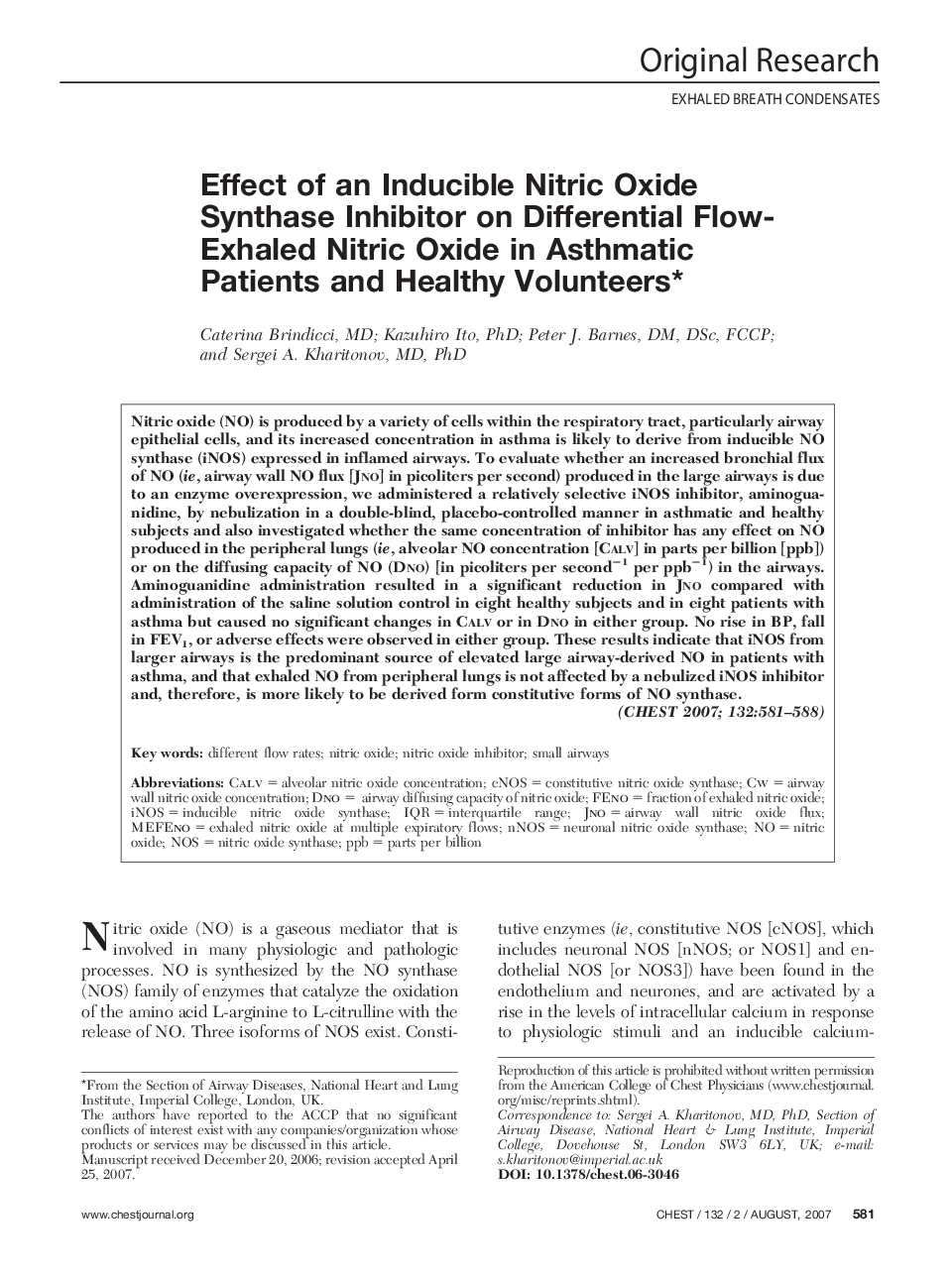| Article ID | Journal | Published Year | Pages | File Type |
|---|---|---|---|---|
| 2904885 | Chest | 2007 | 8 Pages |
Nitric oxide (NO) is produced by a variety of cells within the respiratory tract, particularly airway epithelial cells, and its increased concentration in asthma is likely to derive from inducible NO synthase (iNOS) expressed in inflamed airways. To evaluate whether an increased bronchial flux of NO (ie, airway wall NO flux [Jno] in picoliters per second) produced in the large airways is due to an enzyme overexpression, we administered a relatively selective iNOS inhibitor, aminoguanidine, by nebulization in a double-blind, placebo-controlled manner in asthmatic and healthy subjects and also investigated whether the same concentration of inhibitor has any effect on NO produced in the peripheral lungs (ie, alveolar NO concentration [Calv] in parts per billion [ppb]) or on the diffusing capacity of NO (Dno) [in picoliters per second−1 per ppb−1) in the airways. Aminoguanidine administration resulted in a significant reduction in Jno compared with administration of the saline solution control in eight healthy subjects and in eight patients with asthma but caused no significant changes in Calv or in Dno in either group. No rise in BP, fall in FEV1, or adverse effects were observed in either group. These results indicate that iNOS from larger airways is the predominant source of elevated large airway-derived NO in patients with asthma, and that exhaled NO from peripheral lungs is not affected by a nebulized iNOS inhibitor and, therefore, is more likely to be derived form constitutive forms of NO synthase.
